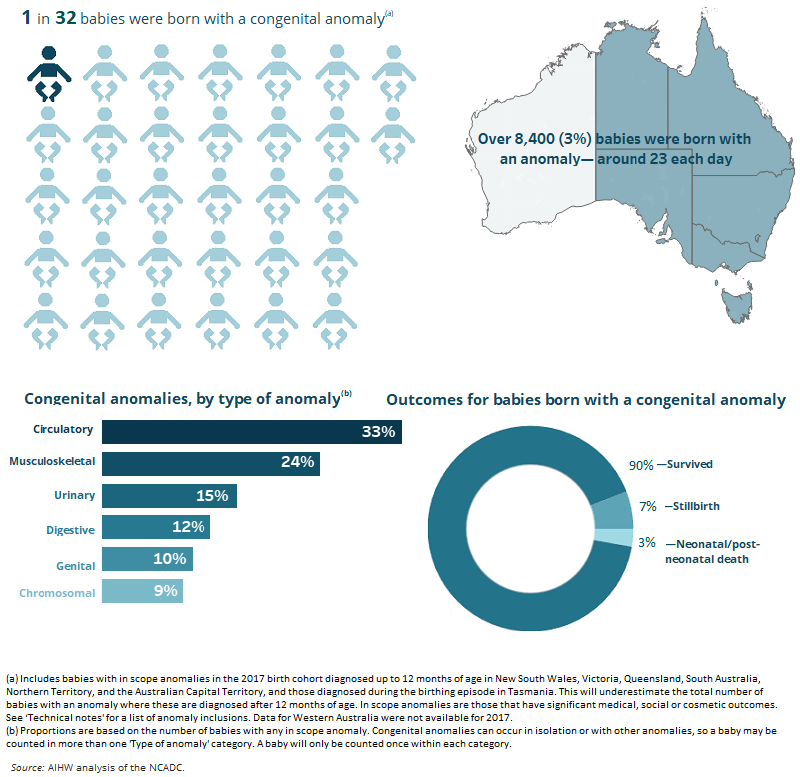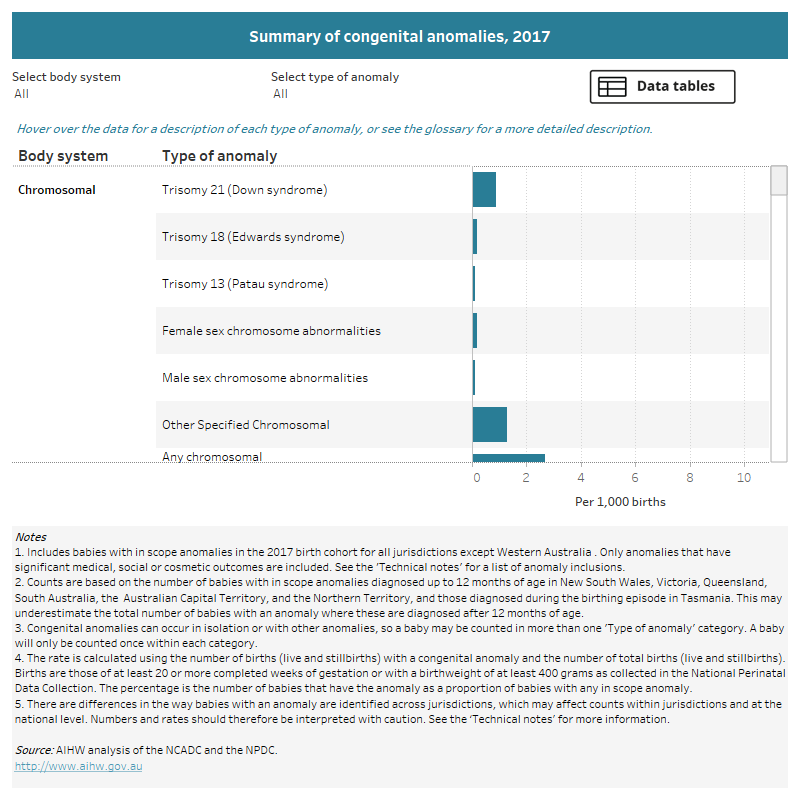How many babies have a congenital anomaly?
In 2017, over 8,400 (3%) babies were born with a congenital anomaly, or around 23 babies born each day. Over two-thirds of these babies (68%) were diagnosed with one anomaly and just under one-third (32%) had multiple anomalies. Over half of those with more than one anomaly (56%) had these in the same body system; 44% of babies with more than one anomaly had these in different body systems, the most common combination being a circulatory system and chromosomal anomaly.
Circulatory system anomalies (these are anomalies of the heart and major blood vessels) were most commonly reported, with 33% of babies with any anomaly having a circulatory system anomaly. This was followed by musculoskeletal system anomalies (24%) and urinary system anomalies (15%).
Most (90%) babies with an anomaly survived their first year (Figure 1). However, nearly 1 in 10 babies with an anomaly did not live past their first birthday. Around 7% of babies with an anomaly were stillborn and 3% died in the neonatal or post-neonatal period.
Figure 1. Types and outcomes of babies born with congenital anomalies

What congenital anomalies do babies have?
Figure 2 shows the number and rate of babies with different types of anomalies. The anomalies are grouped and can be filtered by body system or type of anomaly. Please note:
- Numbers and rates are based on data from 7 jurisdictions. Data for Western Australia were not available for 2017.
- Out of scope anomalies were excluded from reporting. See Technical notes for information on reporting inclusions and exclusions.
- Numbers and rates are based on anomalies diagnosed in babies up to 12 months of age. This may underestimate the number of cases in some instances, where anomalies are diagnosed after 12 months of age.
- Anomalies can occur in isolation or with other anomalies, so a baby may be counted in more than one body system or type of anomaly category.
Figure 2. Number and rate of congenital anomalies, 2017
Number and rate of selected anomalies, 2017
This data visualisation shows the number and rate of babies with different types of congenital anomalies. Data can be viewed as a table or a figure and filtered by the type of anomaly. It shows that in 2017, over 8,445 babies had a congenital anomaly, or 32 babies per 1,000 births.



